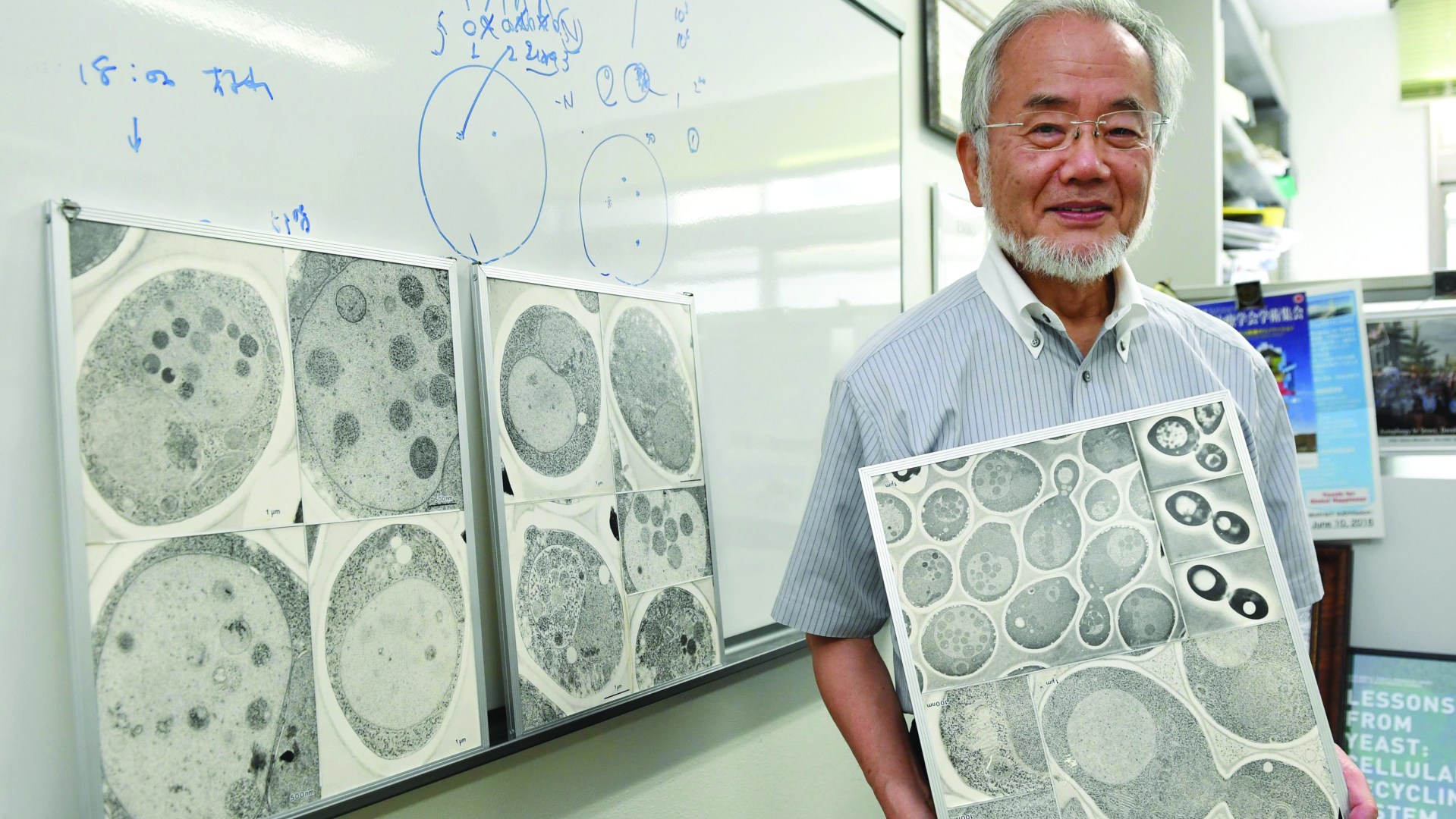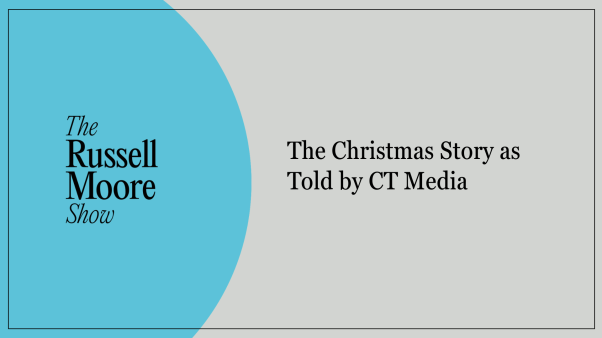With every patient I treat, I hear myself echo the same sentiment: I know this hurts. I’m sorry. It will be over soon. In the emergency department, healing rarely comes without pain. It may be the wrenching of a joint back into place, the lancing of an abscess, or the administering of antibiotics through the business end of a large needle. But with the exception of the few who decide at the first flash of my scalpel that perhaps they aren’t that sick, most patients understand: The hurt is temporary, and it has a purpose.
They understand it because we see it everywhere: Sacrifice now produces benefits later. Whether the sacrifice is submission to pain, change, or loss, we believe that “suffering produces perseverance; perseverance, character” (Rom. 5:3–4) because the truth of it plays out in every theater of our lives. Whether it is in relationships, education, or the gym, we lose something and experience pain to be better off. So when scientists first peered into a cell and saw it destroying its own proteins and organ-like parts (organelles)—structures that it had invested heavily into building—their first question was, “Where is the benefit of this sacrifice?”
The process of autophagy (literally “self-eating”) is so vital to our survival that it was the focus of the 2016 Nobel Prize in Physiology or Medicine announced in October. Winner Yoshinori Ohsumi described the discovery of this complex process as a surprise. He watched as cells wrapped entire proteins and organelles in a protective membrane—and then shredded them to pieces with enzymes. It was the equivalent of watching a wrecking ball take down a skyscraper, reducing a majestic work of architecture into a pile of bricks.
The destruction seemed counterintuitive, even dangerous. The mantra of cellular biology up to that point had been that building proteins—not destroying them—was the key to health and survival. The controlled but nonetheless devastating demolition of these structures into which so much energy and resources had been poured was perplexing. Wouldn’t this starving cell prefer to have all of its organelles—just as a body would prefer to have all of its organs? Why, in the face of adversity, would a cell demolish something it had worked very hard to build?
Changing the Metaphor
As Ohsumi’s team investigated further, the metaphor used for three decades changed: Autophagy isn’t cellular self-cannibalism so much as it is cellular pruning. “Organisms never waste precious resources without good reason,” Ohsumi said, “and degradation is a process essential for the creation of new life.” At its core this process was one of destruction, but it was not reckless. A cell that was indiscriminately destroying pieces of itself was not going to last long, but one that could select old, broken, misshapen, or malignant proteins and recycle them into something new would flourish.
Since Ohsumi’s work in the early 1990s, researchers around the world have found evidence of autophagy in every tissue of the human body and have described its role in many of our most prevalent diseases. From embryos onward, otherwise healthy cells package up and degrade their internal pieces and proteins, resulting in surprising vitality. Old proteins are turned into new ones, bacteria are destroyed, and the nutrients bound up in superfluous organelles are redirected into more critical processes.
The heart autophagocytizes mitochondria (the organelles within a cell responsible for energy production) when they age and slow down so it can replace them with newer, healthier ones. Neurons in the brain clear away misfolded or damaged proteins that would otherwise build up and block transmission of the signals that compose our thoughts and actions. Even scars are not left behind; instead, through a slow and long process, cells carefully excise and reorganize the fibers of wounds. The mark on the skinned knee fades. The broken bone returns to full strength.
Over and over, our body’s cells sing the same song of autophagy in slightly different keys. Sacrifice and destruction lets us build something better. Cells in a human embryo can appear to eat themselves nearly to the point of death, but that’s what turns it from something that looks like a tadpole into something that looks more like a baby.
The Power of Fasting
As Ohsumi and other researchers established the value of this intracellular paring process, they began to ask more questions. Chief among them: If pruning within our cells leads to improved health, how can we kick it into high gear? The answer, Ohsumi found as he watched yeast churn out autophagocytic byproducts under his microscope lens, was famine.
Adversity comes to a cell in only a few forms, the predominant of which is starvation. This physical stress results in a cleansing, as hungry cells that can’t find food in their external environment suddenly look inwards. When they do, they find broken proteins and organelles that may have been ignored during times of abundance. Without other options, they harvest these neglected leftovers for survival, reducing them back to the molecular “bricks” that they need to build the new, healthier proteins that will get them through hard times.
In other words, short periods of fasting or stress result in healthier, more enlivened organisms. Fasting makes them stronger because their focus turns to sacrificing their broken pieces and regenerating the components that really matter. Organisms that undergo repeated short periods of stress and famine do better, live longer, and remain healthier. Stress and starvation are beneficial as long as they don’t go too far or last too long.
“It is true that research and competition are inseparable, but I simply cannot find much meaning in competing to become the first in something,” Ohsumi said in 2012. “Rather, I believe that the greatest joy for scientists is to initiate the development of a world that no one has ever seen before. . . . I did not have any conviction that my research would lead to the elucidation of diseases when I first began. A single discovery can bring about dramatic progress in research.”
He did in fact open a new world of research, as the Nobel committee recognized. But at the same time, the concept seems familiar. We need to be pruned to stay healthy? Yes. “Every branch that bears fruit [my Father] prunes so that it will be even more fruitful” (John 15:2). We grow through adversity, trimming, and even calculated death? Of course. “No discipline seems pleasant at the time, but painful. Later on, however, it produces a harvest of righteousness and peace for those who have been trained by it” (Heb. 12:11). An organism that has never known hunger will also never know true vitality? Definitely. “Consider it pure joy, my brothers and sisters, whenever you face trials of many kinds, because you know that the testing of your faith produces perseverance. Let perseverance finish its work so that you may be mature and complete, not lacking anything” (James 1:2–4). Perhaps because science explores a world created by a God who calls himself constant and unchanging, the results echo truths we have witnessed in every sphere of our world.
Peter was rebuked repeatedly but became a pillar of the church. Paul’s sight was taken from him and the result was a flourishing ministry. Daniel and his friends appeared “healthier and better nourished” after fasting in King Nebuchadnezzar’s court. As a good vinekeeper, God surgically excises what is diseased, broken, and extraneous from those who abide in him so that they may continue to abide and bear fruit. Without autophagy, our hearts fail, our body breaks down, and our wounds never heal. It’s as true for our cells as it is for our souls.
Lindsay Stokes is an emergency physician living in Albany, New York.










